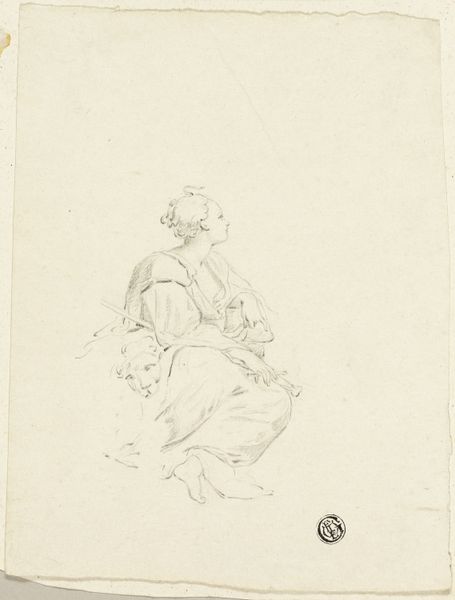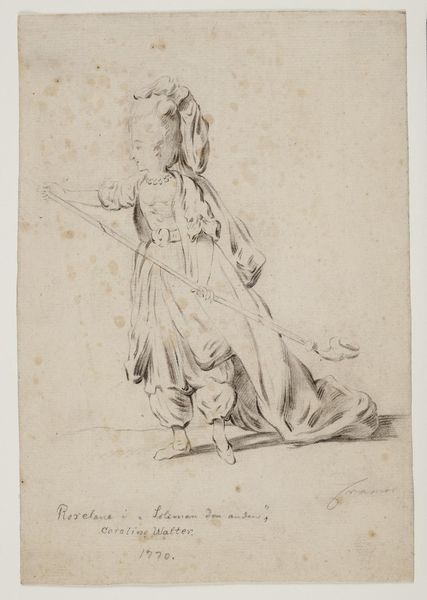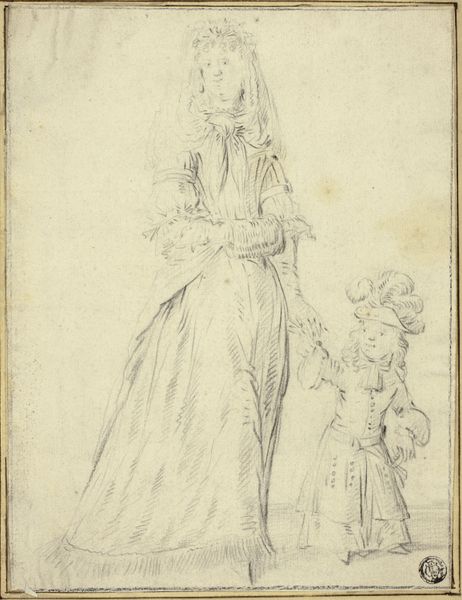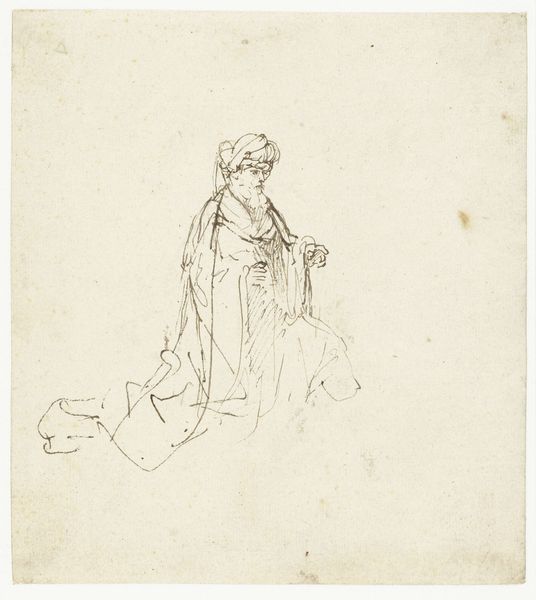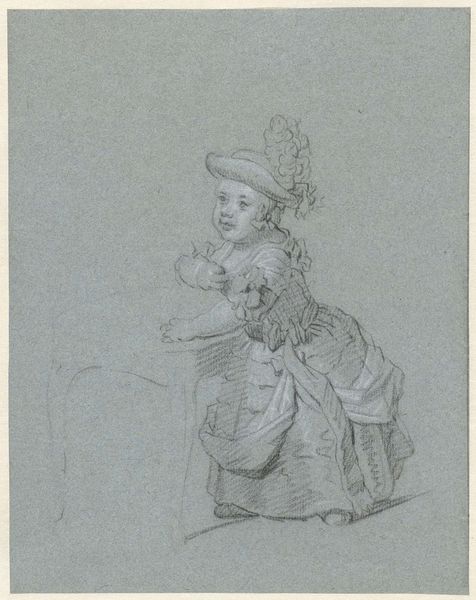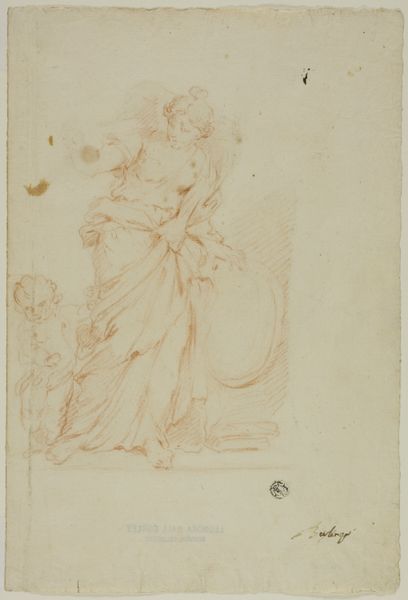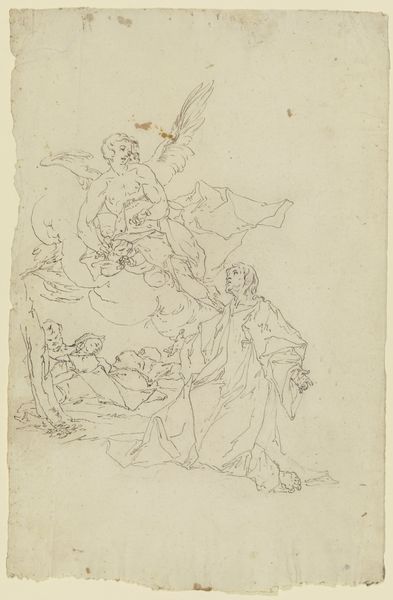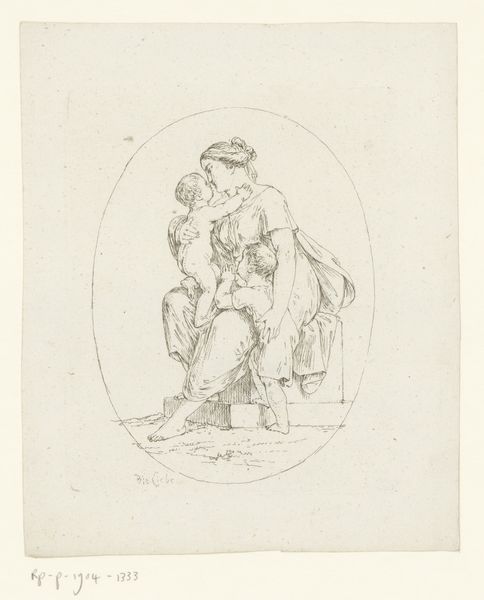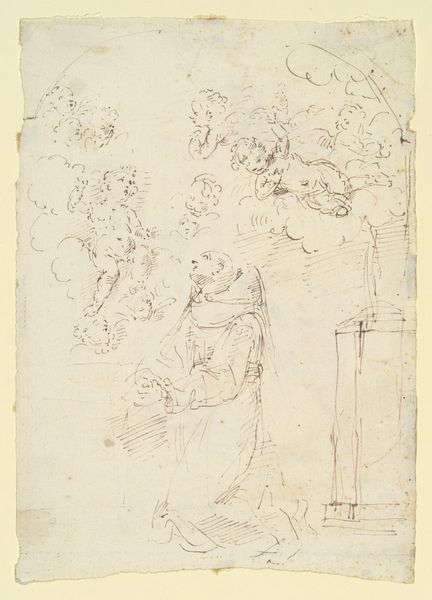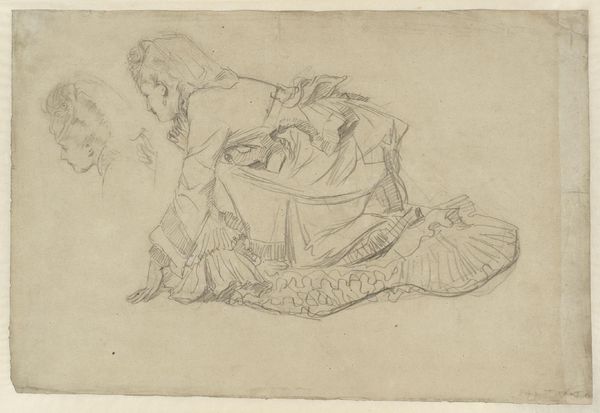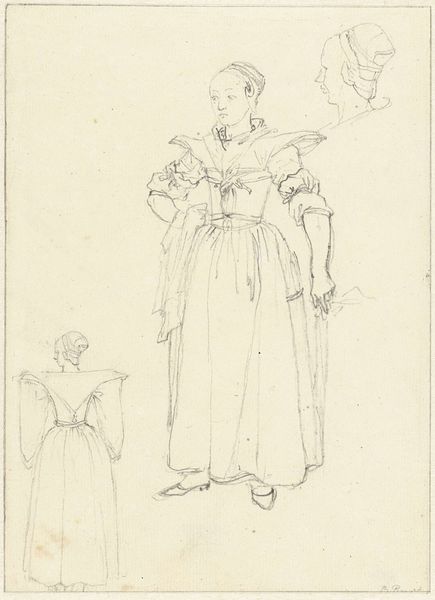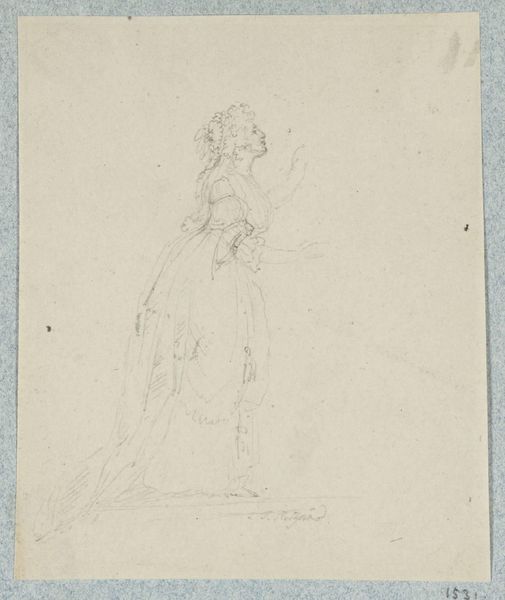
drawing, paper, pencil
#
drawing
#
dutch-golden-age
#
figuration
#
paper
#
pencil
#
genre-painting
Dimensions: height 182 mm, width 140 mm
Copyright: Rijks Museum: Open Domain
Editor: Here we have "Vrouw lopend met een kind aan leidsels en een hond," or "Woman Walking with a Child on Leading Strings and a Dog," created circa 1660 by Gesina ter Borch. It's a delicate drawing, pencil on paper. It strikes me as remarkably simple in its composition. What are your thoughts on it? Curator: Initially, the subtle lines of the graphite pencil offer us a window into the artist's approach. Ter Borch masterfully uses line to articulate form. Note the strategic employment of varying line weights to delineate the figures. Observe the density of lines used to render the folds of the woman's dress in contrast to the light, almost ethereal strokes, defining the child's features. What does this conscious variation communicate to you? Editor: It almost seems like she is focusing on the details that define form and texture, while others seem like gestures capturing fleeting moments. The drawing is economical but complete. Curator: Precisely. Furthermore, consider the positioning of the figures within the pictorial space. The verticality of the woman, juxtaposed with the diminutive stature of the child and the quadruped form of the dog, establishes a visual hierarchy, subtly guiding the viewer's eye through the composition. How does this spatial arrangement impact your reading of the image? Editor: It guides my gaze towards the mother figure and perhaps her role as the center of the domestic sphere. It emphasizes relationships of scale and proportion and draws connections through common lines of sight and attachment of leashes. Curator: Indeed. And note how the negative space, the untouched paper, functions just as actively as the drawn lines. This visual parsimony invites contemplation, does it not? Editor: It certainly does. It's fascinating how much information and narrative can be conveyed with such sparse means. I hadn't initially considered how the absence of detail contributes to the work's overall impact. Curator: Recognizing how formal elements shape meaning expands our comprehension of the artwork. This analytical approach enables a more thorough investigation into its aesthetic value.
Comments
No comments
Be the first to comment and join the conversation on the ultimate creative platform.

